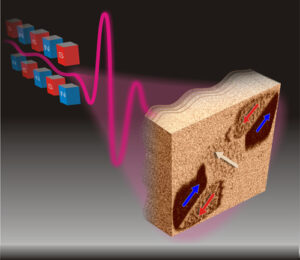 |
Ultrafast phononic switching of magnetization We demonstrated an ultrafast resonant excitation of the longitudinal optical phonon modes in magnetic garnet films switches magnetization into a peculiar quadrupolar magnetic domain pattern, revealing the magneto-elastic mechanism of the switching. In contrast, the excitation of strongly absorbing transverse phonon modes results in a thermal demagnetization effect only. |
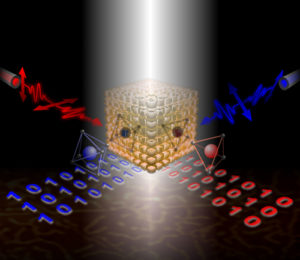 |
Selection rules for all-optical magnetic recording in iron garnet We report the experimentally revealed selection rules on polarization and wavelengths of ultrafast photo-magnetic recording in Co-doped garnet film and identify the workspace of the parameters (magnetic damping, wavelength and polarization of light) allowing this effect. The revealed selection rules indicate that the excitations responsible for the coupling of light to spins are d-electron transitions in octahedral and tetrahedral Co-sublattices, respectively. |
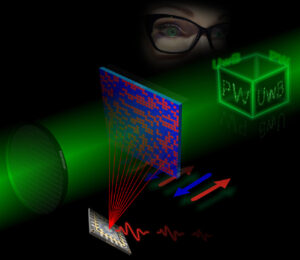 |
Dynamic complex opto-magnetic holography We experimentally demonstrate a holistic approach to serial computation and repeatable writing of computer-generated dynamic holograms without Fourier transform, using minimal amounts of computer memory. We use the ultrafast opto-magnetic recording of holographic patterns in a ferrimagnetic film with femtosecond laser pulses. The intensity-threshold nature of the magnetic medium allows sub-diffraction-limited, point-by-point toggling of arbitrarily localized magnetic spots on the sample, providing holographically reconstructed 3-D images. |
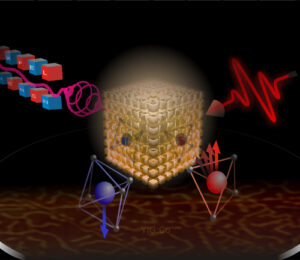 |
Transient Non-Collinear Magnetic State for All-Optical Magnetization Switching Using ultrafast X-ray spectroscopy, this work is able to resolve changes in the magnetization state induced by resonant absorption of infrared photons in Co-doped yttrium iron garnet, with negligible thermal effects. This work finds that the optical excitation of the Co ions affects the two distinct magnetic Fe sublattices differently, resulting in a transient non-collinear magnetic state. |
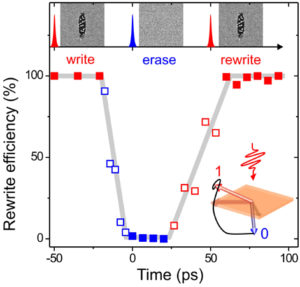 |
Fundamental Limits on the Repetition Rate of Photomagnetic Recording In the last decade it was demonstrated that the fastest way to write information employs ultrashort laser pulses. Naturally such experiments raise questions about the ultimate limit of repetition rate at which light can switch a medium between stable bit states. Here we demonstrate that with femtosecond pulses it is possible to write and rewrite magnetic bits in iron garnet with a frequency of up to 20 GHz, with the maximum repetition rate being defined by the frequency of ferromagnetic resonance in the field of photoinduced magnetic anisotropy. This finding reveals the principles to be employed in achieving magnetic recording at frequencies far beyond today’s state of the art. |
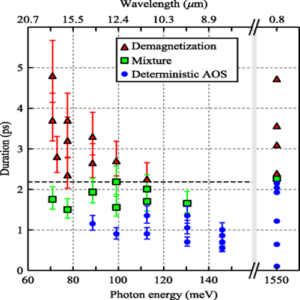 |
Pathways for Single-Shot All-Optical Switching of Magnetization in Ferrimagnets We demonstrate how the exact composition of the ferrimagnet affects the kinetics of the reversal process and facilitates the use of thermal pulses with a duration spanning all relevant timescales within the nonadiabatic limit. We experimentally reveal that pulses with a duration below and above a critical pulse width respectively enable and disable the capability of all-optical magnetization switching in Gd−Fe−Co alloys, and that modest change of the alloy composition leads to drastic variation of the critical pulse width, by almost 2 orders of magnitude. |
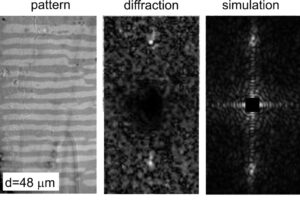 |
Photo-magnetic recording of randomized holographic diffraction patterns in a transparent medium Reconstructions from computer-generated holograms exhibit spurious duplicate images corresponding to higher diffractive orders. We explore the possibility of reducing their visibility by randomization of pixel positions at the stage of displaying of the holograms. Experimental validation is shown on a liquid crystal modulator and also in a promising photo-magnetic transparent medium, which exhibits spontaneous randomization of written magnetic domains. Recorded holographic patterns diffract visible light beams in accordance with theory and numerical simulations. |
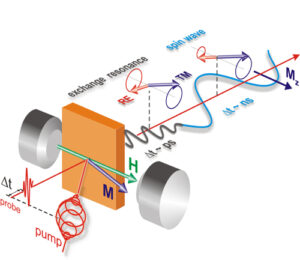 |
Ultrafast optomagnonics in ferrimagnetic multi-sublattice garnets This review discusses the ultrafast magnetization dynamics within the gigahertz to terahertz frequency range in ferrimagnetic rare-earth iron garnets with different substitutions. In these garnets, the roles of spin–orbit and exchange interactions have been detected using femtosecond laser pulses via the inverse Faraday effect. |
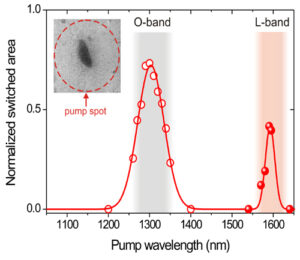 |
All-optical magnetic recording in garnets using a single laser pulse at L-band telecom wavelengths We demonstrate ultrafast photo-magnetic switching in Co-doped iron garnet films at wavelengths relevant to the more-enabled optical L-band window. Single laser pulse switching of magnetization around the 1590 nm wavelength has been found in a narrow resonance band using magneto-optical imaging. The high efficiency of this switching, along with a very low-photon absorption in the L-band, makes this phenomenon interesting for both all-optical magnetic recording and data transfer using telecom systems. |
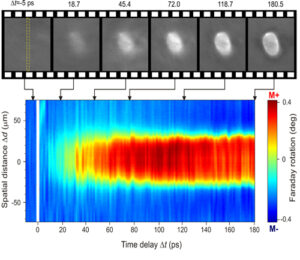 |
Single-shot imaging of ultrafast all-optical magnetization dynamics with a spatiotemporal resolution We present a laboratory system for single-shot magneto-optical imaging of ultrafast magnetization dynamics with less than 8 fs temporal, micrometer spatial resolutions and a magneto-optical Faraday’s rotation sensitivity of 4 mdeg/μm. We determine the spatiotemporal distribution of the effective field of photo-induced anisotropy, driving the all-optical switching of the magnetization in the garnet film without an external magnetic field. |
